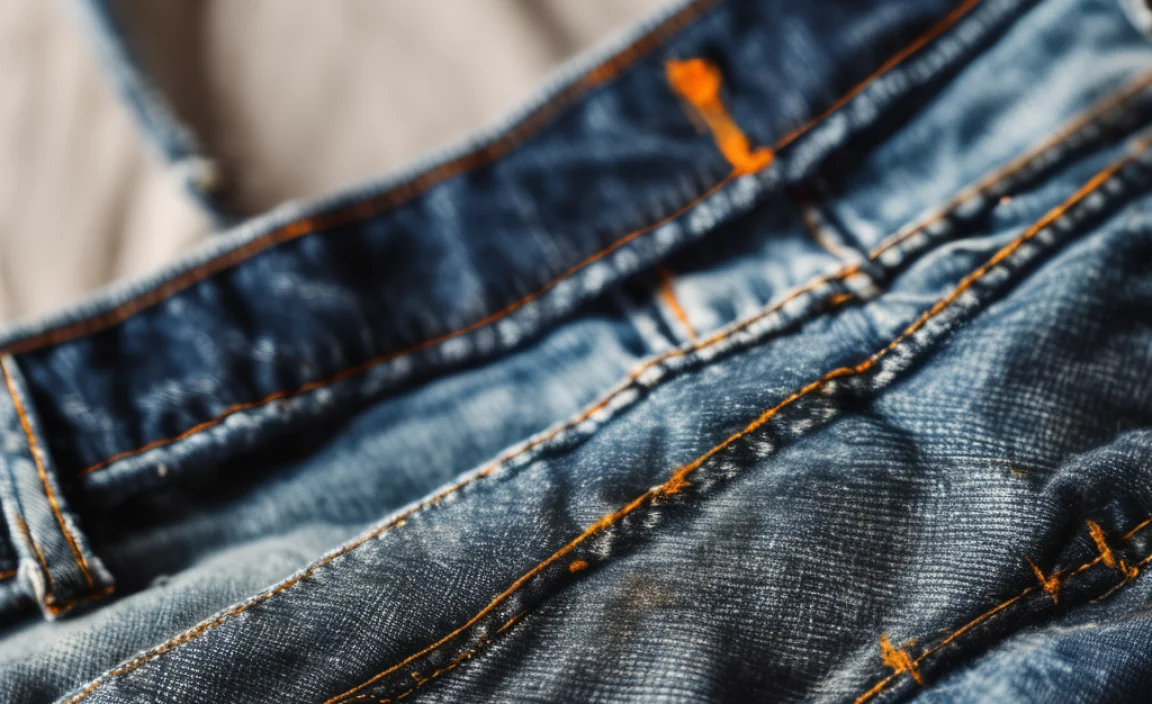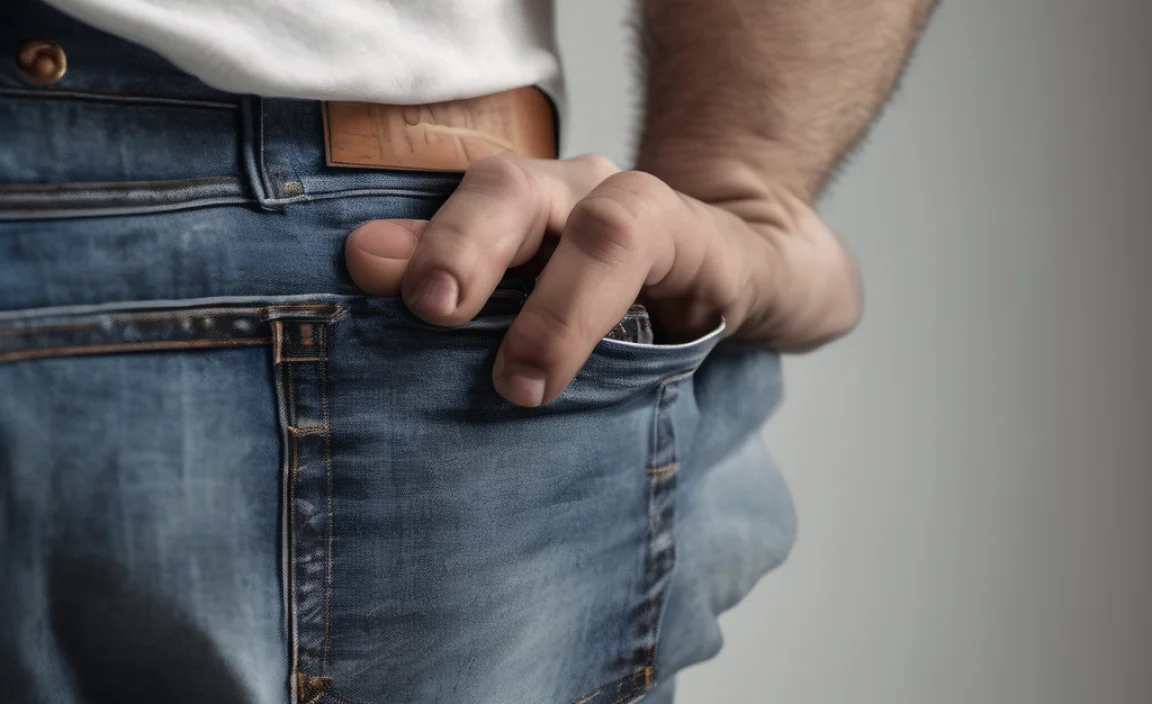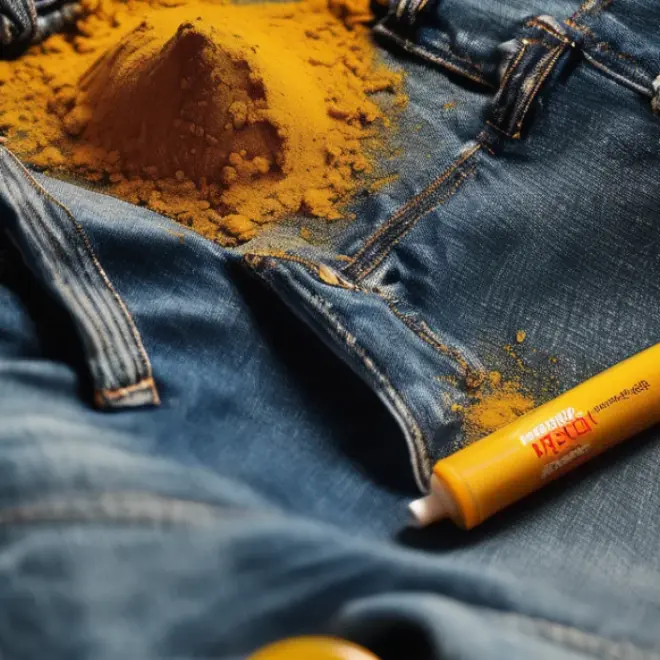Quick Summary: Hemming dad jeans with hydrogen peroxide is a simple, effective way to achieve a clean cut and prevent fraying. This method is beginner-friendly, requires minimal supplies, and offers a professional finish without specialized sewing skills, restoring your favorite jeans to the perfect length.
How to Hem Dad Jeans: The Proven Hydrogen Peroxide Method
Dad jeans are back and better than ever, but sometimes they’re just a little too long. That annoying extra fabric bunching at your ankles can ruin the whole vibe. You might think hemming requires sewing skills you don’t have, or maybe you’ve tried cutting them yourself only to end up with an unraveled mess. Don’t worry, there’s a super simple, no-sew method that works wonders. We’ll walk you through exactly how to get that perfect hemline using just a few household items.
This method is designed for anyone who wants to quickly adjust the length on their favorite pair of denim. We’ll cover everything you need to know, from gathering your supplies to the final touches, ensuring a clean and tidy finish that looks like it came straight from the tailor. Get ready to give your dad jeans a fresh new fit!
Why Hem Your Dad Jeans?

Dad jeans, with their relaxed fit and comfortable rise, are a staple for many. However, their classic cut often means they were designed for a different era or a taller frame. When your jeans are too long, they can look sloppy, hinder your mobility, and just feel “off.” A proper hem transforms the entire look, making them appear more polished and intentional. It’s about making a great pair of jeans work perfectly for you.
Beyond aesthetics, hemming can also prevent further damage. Excess fabric dragging on the ground can wear out quickly, leading to premature holes or fraying, especially at the cuffs. A clean hem seals the edges, prolonging the life of your jeans while ensuring they always look their best.
The Hydrogen Peroxide Method: What You Need

This method is celebrated for its simplicity and effectiveness. Hydrogen peroxide, a common household item, acts as a mild bleaching agent that helps to “set” the fabric and prevent excessive fraying after cutting. It’s a fantastic alternative to sewing for those who want a clean, permanent hem without the effort.
Here’s what you’ll need:
- Your Dad Jeans: Pick the pair that needs tailoring.
- Sharp Fabric Scissors or Rotary Cutter: A clean cut is key. Dull scissors can snag the fabric.
- Measuring Tape or Ruler: For accurate measurements. Even a standard ruler works well.
- Fabric Marker or Chalk: To mark your desired hemline.
- Straight Pins: To hold the fabric in place while you work.
- Hydrogen Peroxide (3% Solution): The star of our show. You can find this at any drugstore or supermarket.
- Small Bowl or Cup: To pour the hydrogen peroxide into.
- Sponge or Cotton Balls: For applying the peroxide.
- Iron and Ironing Board: To press the hem flat.
- Optional: A sturdy surface like a cutting mat if using a rotary cutter.
Step-by-Step Guide to Hemming Dad Jeans

Let’s get started. This process is designed to be straightforward, so take your time with each step. You’ll be amazed at how professional your jeans will look!
Step 1: Determine Your Desired Length
First, try on your dad jeans. Stand in front of a mirror and decide exactly where you want the hem to fall. Consider the shoes you’ll most likely wear with them. If you want them to hit just above your ankle bone, or perhaps sit perfectly at the top of your shoe, mark this point. You can use a pin or a fabric marker to indicate your target length.
Pro Tip: Remember that denim can shrink slightly after washing, especially if you’re going to wash them after hemming. A good rule of thumb is to measure and mark about ½ inch to 1 inch longer than your ideal final length, depending on how much you anticipate shrinkage.
Step 2: Mark the Hemline
Take off the jeans and lay them flat on a clean, even surface. Use your measuring tape and ruler to measure from the crotch seam down to your desired hem point on both legs. Transfer this measurement to the jeans, ensuring it’s consistent on both the front and back of each leg. Use your fabric marker or chalk to draw a clear line around the entire circumference of each leg at your chosen length. Make sure this line is perpendicular to the leg seam.
Step 3: Cut Off the Excess Fabric
Now comes the cutting. Using your sharp fabric scissors or rotary cutter, carefully cut along the marked line. It’s best to keep the fabric as smooth and flat as possible while cutting. If your jeans have a finished hem that you want to replicate, try to cut just below the existing hem. If you’re aiming for a raw, frayed edge, you can simply cut along your marked line, and we’ll address fraying control later.
Important Note: Aim for as straight and clean a cut as possible. A jagged cut will be harder to manage in the later steps and might not look as polished.
Step 4: Prepare for the Hydrogen Peroxide Application
This is where the magic happens. You want to treat the area just above where you cut. This helps to bind the fibers and prevent excessive unraveling. Pour a small amount of 3% hydrogen peroxide into your bowl. You don’t need much. Dip your sponge or cotton balls into the peroxide, ensuring they are damp but not dripping wet.
Step 5: Apply the Hydrogen Peroxide
Carefully dab the damp sponge or cotton balls along the cut edge of the denim, about ¼ to ½ inch above the raw cut. Work your way around the entire circumference of both legs. The goal is to lightly saturate the very top edge of the fabric you’re keeping, creating a barrier against excessive fraying. You are not soaking the entire jean leg, just targeting the area where the fibers might start to unravel.
Wear Guide Tip: Always test the hydrogen peroxide on an inconspicuous area of the jeans first (like an inside seam) to ensure it doesn’t cause unwanted discoloration on your specific denim wash. Most washes are fine, but it’s always better to be safe!
Step 6: Let it Dry
Allow the applied hydrogen peroxide to air dry completely. This can take anywhere from 30 minutes to a couple of hours, depending on humidity and how much peroxide you used. You can speed this up slightly with a hairdryer on a cool setting, but avoid heat which can affect the fibers.
Step 7: Press the New Hem
Once completely dry, lay each leg flat on your ironing board. Fold the raw edge up by about ¼ to ½ inch. Use your fabric marker or chalk to draw a new line where you want your finished hem to be. Then, fold that top edge up again to meet your marked line, or to your desired finished hem width. This creates a clean, folded edge. Press firmly with your iron to create a crisp crease. This fold will become the new hem of your dad jeans.
Important: Make sure the fabric is pressed smoothly and the fold is even all the way around. This step is crucial for a neat finish.
Step 8: Secure the Hem (Optional but Recommended)
While the hydrogen peroxide helps control fraying, for a truly secure and professional-looking hem, you can do one of two things:
- Stitch-Witchery/Fusible Webbing: Cut a piece of fusible webbing to fit the inside of your folded hem. Place it between the folded fabric layers and press with your iron according to the product’s instructions. This literally fuses the hem in place without any visible stitching. This is a fantastic no-sew solution for a fast and durable hem. Companies like
- Fabric Glue: Apply a thin, even line of strong fabric glue along the inside edge of the folded hem before pressing it down. Clamp or pin it in place until dry, following the glue manufacturer’s instructions.
- Hand Stitching (Simple): If you’re comfortable with a needle and thread, a simple whip stitch or running stitch along the inside of the hem can provide extra security. Black or a matching denim thread would be best.
Step 9: Final Press and Wear
Once your chosen securing method is dry or set, give the hem a final press with your iron. This will ensure everything is smooth and sharp. Now, try on your perfectly hemmed dad jeans! They should now fit exactly how you envisioned.
Alternative Hemming Methods & When to Use Them

While the hydrogen peroxide method is excellent for a clean, controlled finish, especially for beginners, other techniques exist. Understanding these can help you choose the best approach for different denim styles and desired looks.
The “Cut-off” Raw Hem
How it works: Simply cut the jeans to your desired length and let the edges fray naturally.
Pros: Extremely easy, trendy, and requires no extra tools beyond scissors.
Cons: Can fray excessively over time, leading to a messy look or holes if not controlled. The hydrogen peroxide method is a great way to control this kind of fraying.
Sewing a Traditional Hem
How it works: Fold the fabric twice (usually ¼ inch then ½ inch) and stitch it down with a sewing machine or by hand.
Pros: Permanent, durable, and provides the most “finished” look.
Cons: Requires sewing machine or hand-sewing skills, can be time-consuming.
Using a Sewing Machine
How it works: Similar to a traditional hem, but done with a machine. You can use a standard stitch or even a double-needle for a professional, factory-like finish.
Pros: Very durable, fast for those with machine experience, can achieve a professional look.
Cons: Requires a sewing machine and some knowledge of its operation. Denim can be tough on needles and machines.
Table: Comparing Hemming Methods
| Method | Difficulty | Tools Required | Durability | Appearance | Best For |
|---|---|---|---|---|---|
| Hydrogen Peroxide | Beginner | Scissors, ruler, marker, peroxide, iron, optional glue/webbing | Good, controlled fraying | Clean, semi-finished edge or provides base for raw hem | Beginners, quick fixes, controlled fray, dad jeans |
| Cut-off Raw Hem | Very Beginner | Scissors | Variable, can fray excessively | Raw, frayed edge | Trendy looks, achieving a distressed style |
| Sewing Machine | Intermediate | Sewing machine, thread, scissors, ruler | Excellent | Finished, professional, durable | Long-lasting hems, structured jeans, all denim types |
| Hand Sewing | Intermediate | Needle, thread, scissors, ruler | Good | Finished, can be subtle or decorative | Quick repairs, no machine access, specific stitch styles |
| Fusible Webbing/Glue | Beginner | Iron, webbing/glue, scissors, ruler | Good | Clean, no-sew finished edge | No-sew projects, permanent attachment without stitches |
Frequently Asked Questions About Hemming Dad Jeans
Q1: Will hydrogen peroxide damage my jeans?
A1: A 3% solution of hydrogen peroxide is generally safe for most denim. It acts as a mild bleaching agent that helps set the fibers. However, always test it on an inconspicuous spot first, as very dark washes or specific dyes might react slightly. You’re only applying it to a small area near the cut edge.
Q2: How much fraying can I expect with this method?
A2: The hydrogen peroxide application is designed to control fraying, not eliminate it entirely, especially if you’re aiming for a raw hem look. It helps to bind the fibers just above the cut edge, preventing them from unraveling too far up the leg. You’ll get a neat, contained fray if you leave it raw, or a clean, bound edge if you iron and secure it.
Q3: Can I use bleach instead of hydrogen peroxide?
A3: It’s not recommended. Regular household bleach is much harsher and can cause significant, uncontrolled discoloration and weaken the fabric fibers more severely than hydrogen peroxide. Stick to the 3% hydrogen peroxide solution for best results.
Q4: What’s the difference between this method and just cutting them off?
A4: Simply cutting without any treatment can lead to excessive fraying, making the hem look sloppy or even causing the jeans to fall apart over time. The hydrogen peroxide treatment, followed by ironing and securing the hem, provides a more controlled, intentional, and durable finish.
Q5: My jeans are a stretch denim. Will this method work?
A5: Yes, this method can work on stretch denim, but be extra careful during the cutting and ironing stages. Stretch denim can be more prone to stretching out of shape. Ensure your new hem is pressed very firmly and consider using fusible webbing or fabric glue for maximum hold, as these methods tend to hold stretch fabrics better than a simple stitch.
Q6: How long will the hem last?
A6: With proper care, a hemmed dad jean using this method can last for a very long time. If you opt for securing the hem with fusible webbing, fabric glue, or stitching, it will be very durable. Even a controlled raw hem, treated with peroxide, will hold up better than an untreated cut edge.
Q7: Can I reverse this hem if I change my mind?
A7: If you’ve used fusible webbing or fabric glue, it can be difficult to remove without leaving some residue or slight damage to the fabric. If you only used hydrogen peroxide and pressed the hem, or did a very simple hand stitch that can be undone, it’s more reversible. For raw hems, once frayed, it’s generally not reversible to its original length.
Conclusion
Hemming your dad jeans doesn’t have to be a daunting task. The hydrogen peroxide method offers a straightforward, effective, and accessible way to achieve a custom fit without needing a sewing machine or complex skills. By following these simple steps, you can easily take control of your denim’s length, ensuring your favorite jeans look and feel exactly how you want them.
Whether you prefer a crisp, clean hem secured with fabric glue or webbing, or a stylishly controlled raw edge, this proven method provides a solid foundation. It’s all about making practical style adjustments that fit your life and your wardrobe. So grab your scissors, a bottle of peroxide, and give your dad jeans the perfect hem they deserve!











